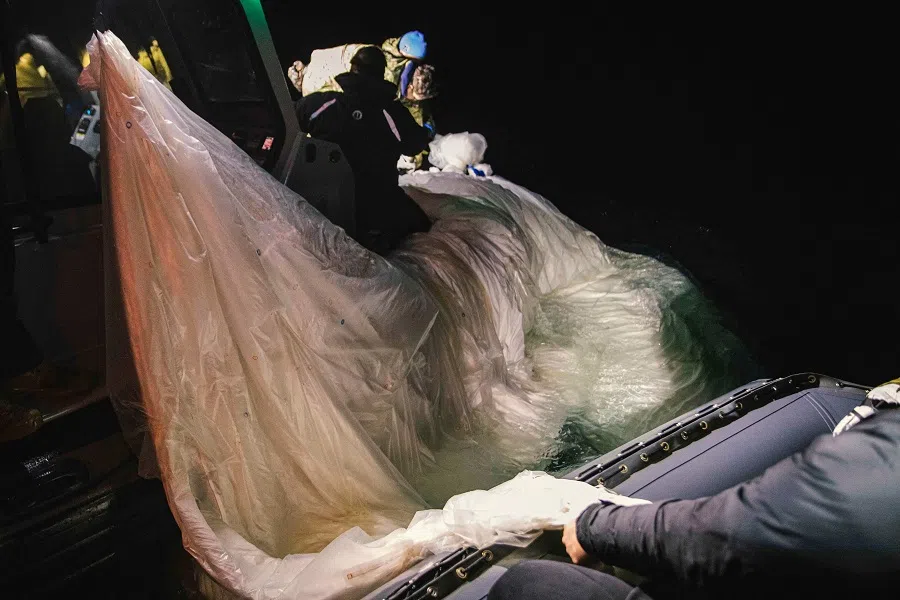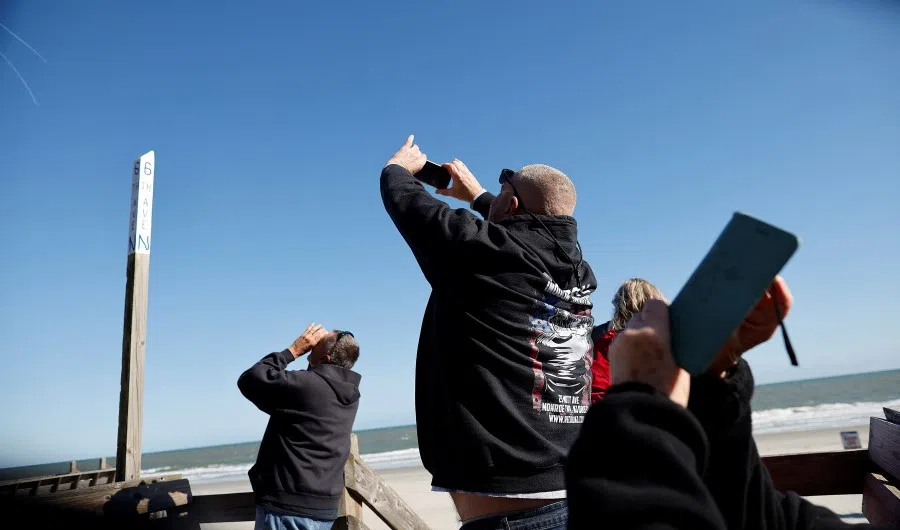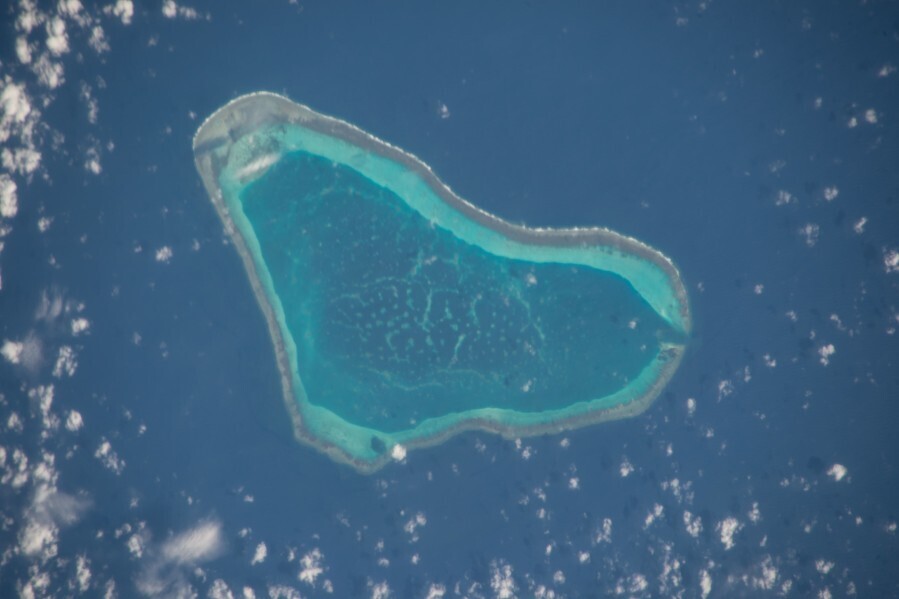Turbulence caused by Chinese balloon set to last
US-China tensions have heightened in the aftermath of the Chinese balloon incident. The Republicans are seizing the opportunity to criticise the Biden administration over the threat to national security, while China accuses the US of overreacting and violating the spirit of international law and international practice. Zaobao correspondent Yang Danxu notes that if the situation is not managed properly, the strained relations could have an impact on other issues, such as the South China Sea.

No one would have thought that a Chinese balloon entering US airspace would strain China-US relations for days and derail US Secretary of State Antony Blinken's ice-breaker visit to China.
The balloon was finally shot down off the coast of South Carolina by the US military on 4 February, ending its days of "wandering" in North America. However, controversy surrounding the balloon incident is still rife.
Reinforced fears of 'China threat'
Since last weekend, talk of national security loopholes and whether the US government has been tough enough on China has preoccupied US congressmen on both sides of the aisle.
The Republicans seized the opportunity to attack the Biden administration for being weak on China. Former US President Donald Trump also took to his own social media platform to slam the Biden administration as "incompetent". Some Republicans even called for President Joe Biden and Vice-President Kamala Harris to resign because of the great security threat that the Chinese balloon incident posed.
The balloon incident has laid bare the US's deep concerns about its national security challenges and reinforced its broader fears of a "China threat".

The Democrats immediately retorted, insisting that the Chinese balloon was only detected because the Biden administration had ordered improvements to strengthen its surveillance.
US intelligence officials added that Chinese surveillance balloons have flown over the US at least three times during the Trump administration, even travelling near sensitive US military facilities and training areas. White House national security adviser Jake Sullivan asserted that the US enhanced its capacity after Biden took office and was thus "able to detect things that the Trump administration was unable to detect".
The balloon incident has laid bare the US's deep concerns about its national security challenges and reinforced its broader fears of a "China threat". As election day draws near in a politically polarised US, it is inevitable that the Chinese balloon incident would be caught in the middle of the bipartisan rivalry. Indeed, the internal tussle has spilled over into external affairs, prompting Washington to postpone Blinken's China trip and to deploy an F-22 fighter jet to shoot down the balloon with a single missile in a high-profile manner.
Reverberations of the balloon incident continue to plague China-US relations. Over the past few days, the US military has been collecting remnants of the balloon off the coast of South Carolina. US officials told the media on 6 February that some debris had already been recovered, which would be sent for intelligence analysis. US personnel are also waiting for the right weather conditions to conduct an undersea surveillance of the debris field to recover more remnants of the flying object, which Washington believes is a "spy" balloon.

Most recently, US-China verbal sparring has been about the ownership of the balloon remnants. US National Security Council spokesperson John Kirby said that the US does not intend to send the remnants back to China, while Chinese foreign ministry spokesperson Mao Ning said on 7 February that the airship "does not belong to the US" but "belongs to China", adding that the Chinese government "will resolutely continue to defend its legitimate rights and interests".
Given these clear international rules, the US was on very firm legal footing in its response to the Chinese balloon. - Australian National University international law professor Donald Rothwell
Within the US's air defence identification zone
Another outstanding issue is that of international law. China admitted that the balloon mistakenly entered US airspace due to force majeure, but criticised the need to shoot it down. China claimed that the US has "obviously overreacted and seriously violated the spirit of international law and international practice". On its part, the US holds that the balloon intruded into US airspace and violated international law.
With Beijing and Washington each saying their piece, Australian National University international law professor Donald Rothwell wrote on 6 February: "The incursion of the Chinese balloon tested the bounds of international law."

He noted that international law is clear with respect to the use of balloons over other countries' airspace, and every country has complete sovereignty and control over its waters extending 12 nautical miles from its land territory. Every country likewise has "complete and exclusive sovereignty over the airspace above its territory" under international conventions.
In other words, each country controls all access to its airspace, including for both commercial and government aircraft. But the upper limit of sovereign airspace is unsettled in international law. Traditionally, the height at which satellites operate comes under space law; in practice, sovereign airspace generally extends to the maximum height at which commercial and military aircraft operate, which is around 13.7 kilometres. The Chinese balloon was operating at 18.3 kilometres above the US.
However, Rothwell noted the US has its own "air defence identification zone", where it requires all aircraft entering US airspace to identify themselves. China, Japan and Taiwan have similar air defence identification zones. Given these clear international rules, the US was on very firm legal footing in its response to the Chinese balloon.
If the balloon incident is not managed effectively, China could give a stronger response to US actions in the South China Sea.
Concerns beyond US airspace
Some international observers raised the concern that the balloon incident might extend to other potential China-US flashpoints, such as the South China Sea. The US claims that its freedom of navigation operations in the South China Sea are in line with international law, but to Beijing, it is a violation of its sovereignty.

If the balloon incident is not managed effectively, China could give a stronger response to US actions in the South China Sea. Following the downing of the balloon, China's Ministry of National Defense said it "reserves the right to use necessary means to deal with similar situations", and one cannot help but worry that the risk of unintended consequences has increased again.
There remain many questions about the balloon. What is its function? Is it purely a weather balloon, or does it have surveillance capabilities? What conclusions will the US reach after analysing the remains? Will the incident be played up in the US's domestic politics? Will domestic pressure also force China into a stronger response? Will the dispute between both sides over international law escalate?
A little balloon has caused such major turbulence and uncertainty in China-US relations, and this turbulence is likely to last for quite some time.
This article was first published in Lianhe Zaobao as "气球事件还没完".
Related: A Chinese balloon derails US-China rapprochement | Global Security Initiative - China's solution to international security? | Xi's Global Security Initiative: In pursuit of China's own interests and ambitions | Biden's National Security Strategy: An Asia-first strategy codified by Europeanists





